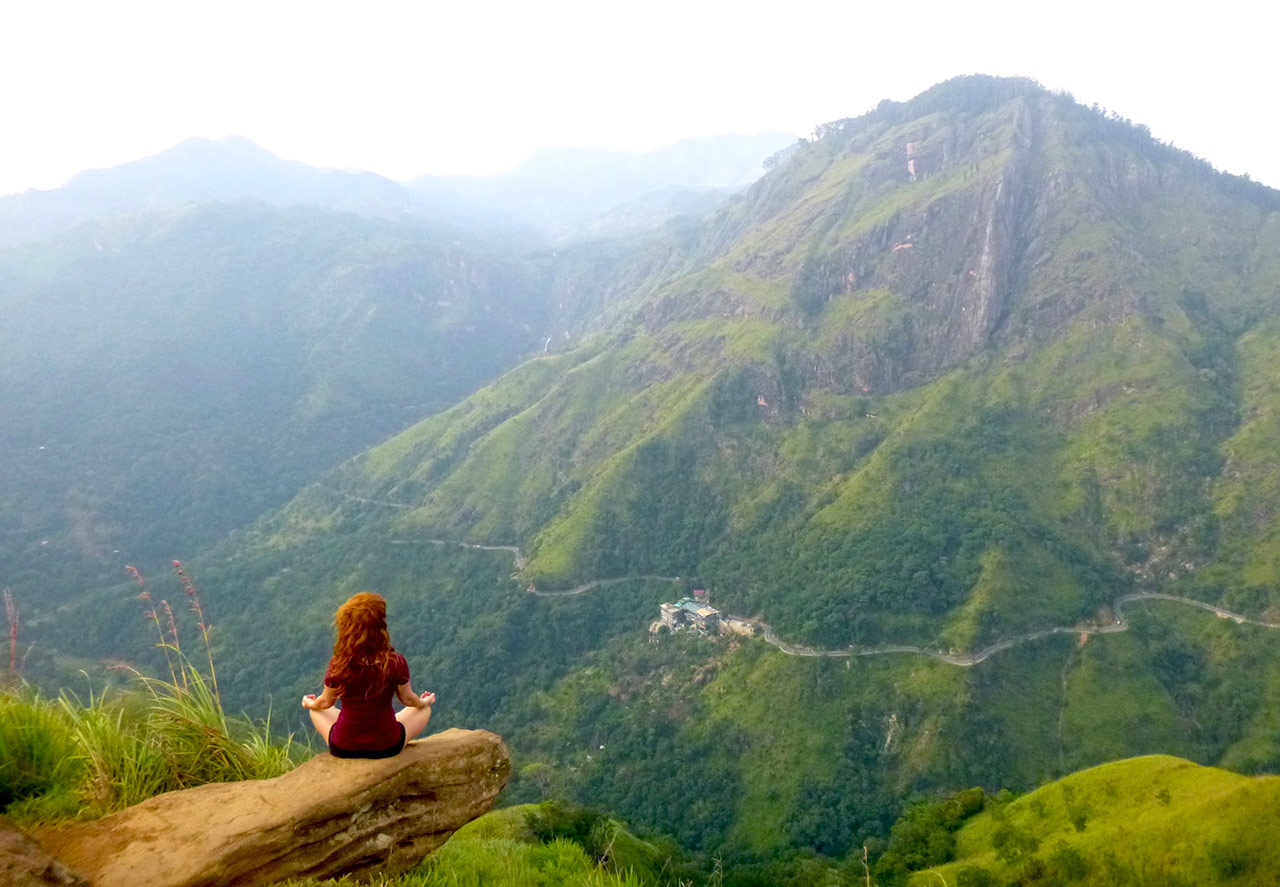Going to a destination where you may relive history including your lineage is one of the finest ways to comprehend it. Heritage tourism, or “travelling to experience the places, artefacts, and activities that authentically represent the stories and people of the past and present,” is a term used to describe this type of travel. Visits to cultural, historic, and natural resources are all included.
Odisha has a long and illustrious religious and cultural history dating back over two thousand years. There are numerous historical sites to visit throughout the state, as well as several heritage monuments that represent history and culture of Odisha. The state is home to Hindus, Jains, and Buddhists, has ancient landmarks and tourist attractions that will enchant you. In Odisha, there are several historical monuments located around the state. Nobody leaves Odisha unhappy thanks to these sites. You would not want to miss the best historical sites in Odisha if you are interested in historical tourism. Odisha is actually home to several UNESCO World Heritage Sites, which makes it a must visit state.
1. Sun Temple

The Sun Temple at Konark is a UNESCO World Heritage Site and the apex of Odisha Temple Architecture. The temple represents the culmination of seven centuries of toil in the pursuit of perfection. The Sun Temple at Konark, dedicated to the Sun God and built by King Narasimha Deva I in the 12th century AD, continues to enchant us with its colossal construction, symmetry, accuracy, and detailed workmanship.
According to archaeologists, the height of the Sun Temple at Konark is estimated to be over 227 feet, making it one of the country’s highest temples. However, the spectacular Jagamohana (Entrance Hall) is all that is left today, with the sanctum sanctorum on the verge of collapsing. The Natya Mandap, which is missing its roof, is the other edifice that still survives among the ruins.
The temple was modelled after the Sun God’s chariot, which was propelled by seven horses and had twenty-four magnificently carved wheels. Historians are enthralled by its scientific precision in addition to its beauty. For example, the wheels are built in such a manner that the sun’s shadow thrown on the spokes of the wheels may be used to determine the time of day. Not only that, but the carvings on the spokes and axesls represent typical activities at that time of day. The wheels, also known as Konark Chakra, are a favourite gift among travellers who visit the shrine.
The laterite stone for the boundary walls, flooring, and stairway, Khondalite for the structure, and Chlorite stone for the door jams and lintel were used to build the temple. Iron strips used to keep the construction together may be spotted among the temple’s ruins.
Some academics believe the Sun Temple was erected in the sea to give the appearance of the Sun God rising from the ocean at daybreak. Because of the gloomy effect of the temple’s roof, European sailors referred to it as Black Pagoda. It acted as a significant marker for sailors sailing the Bay of Bengal at the time.
2. Jagannath Temple

Odisha is renowned as Lord Jagannath’s home state (literally meaning the Lord of the Universe). The temple, which was established in the 12th century AD, is the core of the Jagannath cult, and people from all over the globe visit Puri throughout the year.
The mysticism surrounding Lord Jagannath’s adoration overshadows the architectural splendour of this magnificent temple.The huge temple, which is constructed on a high platform, is a work of art in and of itself.
New extensions to the temple’s construction were made until the 16th century AD. Unlike other temples in the region, the sculptures on the temples are largely of gods and goddesses. Two concentric walls surround the whole temple complex: the Kuruma Bheda (Inner wall) and the Meghnad Pachira (Outer wall) (Wall). The primary entry to the temple is through Singhadwara, which is located on the temple’s eastern façade, with three more entrances positioned in each of the four cardinal directions. However, the other gates are not structurally aligned, suggesting that they were built for security reasons because the temple was in the middle of a stormy time during the 16th and 18th centuries.
Puri hosts a number of Sri Jagannath celebrations throughout the year. Snana Yatra, Netrotsava, Ratha Yatra (vehicle festival), Sayan Ekadasi, Chitalagi Amabasya, Shri Krishna Janma, Dussehra, and other festivals are examples. The world-famous Rath Yatra (Car Festival) and Bahuda Yatra are the most prominent festivals. This celebration has attracted a great throng to see Lord Jagannath perform.
3. Lingaraj Temple

The majestic temple, which stands 180 feet tall, inspires awe and reverence in its visitors. It was built in the eleventh century AD.. James Fergusson, a famous critic and historian, has called the temple “one of the finest examples of purely Hindu temple in India” (1808-1886). The temple represents the pinnacle of temple construction in Bhubaneswar, the birthplace of the Kalinga School of Temple Architecture. There are 150 subsidiary shrines throughout the large temple complex.
For their comprehensive layout, proportions, smooth joints, beautiful craftsmanship, and astonishing grandeur, the temples are regarded as a masterpiece of Indian architecture. The temple is divided into four major halls in general. The Garba Griha (Holy of Holies), the Yajana Mandapa (prayer hall), the Natya Mandapa (dancing and music hall), and the Bhoga Mandapa (where devotees can partake of the Lord’s Prasad (offering). Apart from being a place of prayer, the superb carvings illustrating daily life duties, as well as the activity centres, make the temple a venue for social and cultural gatherings, similar to a modern community centre.
Swayambhu is the name given to Lingaraj (self-originated Shivling). Another significant feature of the temple is that it represents Odisha’s syncretization of the Shaivism and Vaishnavism faiths. Hari Hara is the name given to the Shivling. Perhaps the rise of Lord Jagannath’s cult, which coincided with the building of the Lingaraja Temple, played a part.
Non-Hindus are not permitted to enter the temple. However, from an elevated platform created specifically for tourists just outside the temple complex, one may obtain a glimpse of the whole temple complex and snap photos.
Another feature is the Bindusagar Lake, which is located on the temple’s north side. The 1300 ft long and 700 ft broad lake is the heart of Old Town’s activity and the site of temple celebrations.
The lovely garden of Ekamra Van is located on the western bank of Bindu Sagar and is called after the Hindu legendary scriptures in which Bhubaneswar, the capital city of Odisha, is referred to as Ekamra van or a forest of a single mango tree. The garden is home to a variety of plants that have spiritual and therapeutic value and are traditionally linked with Hindu gods and goddesses.
4. Udaygiri & Khandagiri Caves
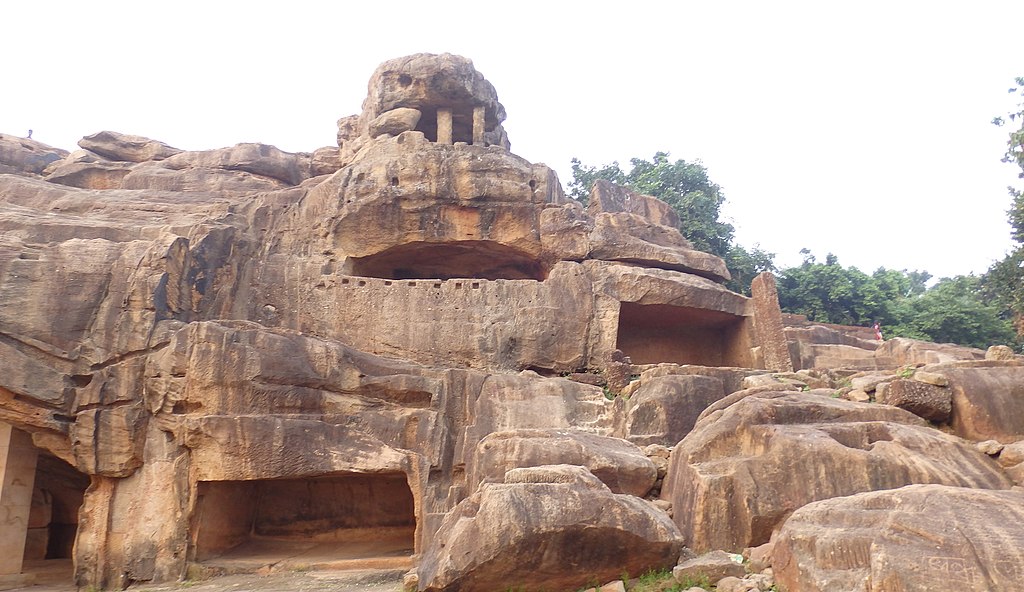
The caverns, located 7 kilometers from Bhubaneswar, transport us back in time and are perhaps the sole documented history of an age cloaked in mystery. Built around the 2nd century BC by Ruler Kharavela of the Meghavahana dynasty, usually considered as Odisha’s most powerful king, these ancient rock cut caverns were first found in the 19th century AD by a young British officer named Andrew Sterling.
In the chambers constructed on the Kumari mountain range, the Jain monks were provided a place to live and meditate. Only thirty-three caverns out of the original one hundred and seventeen caves have survived to this day. The Udayagiri hill has eighteen caverns and fifteen caves.
In the caverns constructed on the Kumari mountain range, the Jain monks were provided a place to live and meditate. Only thirty-three caverns out of the original one hundred and seventeen caves have survived to this day. The Udayagiri hill has eighteen caverns, whereas the Khandagiri hill has fifteen.
The Udaygiri caves are managed by the Archeological Survey of India (ASI) and are a ticketed attraction. The Udaygiri caves’ main features include:
- King Kharavela’s inscriptions may be found in Hathigumpha, or the Elephant Cave. The seventeen lines discuss his numerous conquests as well as his leadership style.
- The Rani Gumpha, also known as the Queen Cave, is a two-story building with intricate carvings. Apart from the exquisite sculptures, the cave is recognised for its acoustic qualities.
- The Ganesh Gumpha is a cave dedicated to Lord Ganesha, notable for its Jain teerthankar carvings and other sculptures. Much later, the carvings of Lord Ganesha and two elephants were added.
- The Vyaghara Gumpha, or Tiger Cave, is named after the entrance, which is formed like a tiger’s head, and the door, which is fashioned like a tiger’s throat.
The ASI does not have jurisdiction over the caves in the Khandagiri hills. Khandagiri’s most famous ones are:
- The twelve-armed Sasana Devis, as well as Tirthankar statues, are shown in arabhuji Gumpha.
- Trushula Gumpha — The cave’s walls are adorned with carvings of the twenty-four Jain Tirthankars. TirthankarRishab Dev’s sculpture is very notable.
- Ambika Gumpha – On the cave’s walls are engraved the Yaksha and Yakshini of each Tirthankar.
The most remarkable feature of these exquisitely sculpted caverns is that each cave and artwork was carefully carved by hand with little equipment. The architecture is wonderful, as is the sculpture. The engravings included allusions to mythology and history. The representation of the Kalinga War, in which women and teens battle to preserve their motherland from Ashoka’s troops, is one of the most moving sections of carving.
The caverns were used as Jain monks’ houses and were furnished with a water source in the shape of a tiny canal that runs through each cave, an inventive communication system via holes, a location to light the lamps, and a slanted flooring that functioned as a head rest. Many of the caverns are two-story, and it’s thought that the caves’ top chambers were utilised for intense meditation.
5. Mukteswar Temple
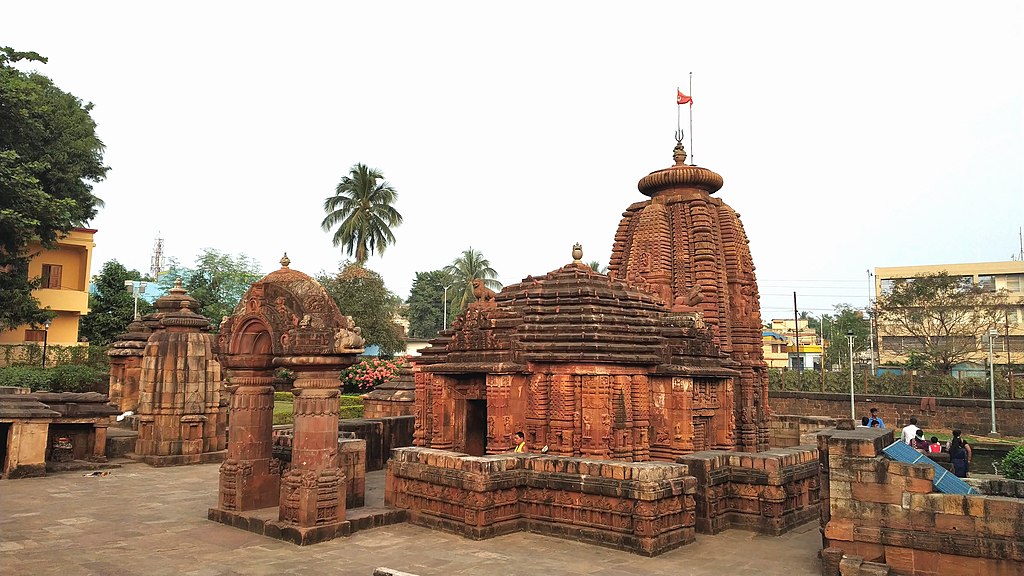
If Parasumreswar symbolizes the beginning of Odisha’s temple building progression, Mukteswar reflects its maturation. Ironically, the two temples lie next to each other, and this may be the only occasion in history where one can view man’s architectural progress in such close proximity.
Mukteswar’s sculptures are adorned with finely carved finery. The figures are smaller and more proportional. The Jagamohana, or main entrance, blends into the sanctum sanctorum. Images of Lakulisa, the saint who spread the Shaivism pashupata sect in the state during the 6th century AD, may be seen. On the temple’s outside walls, there are additional images of emaciated hermits or ascetics in meditative stances. A letter-writing woman is seen in one of the carvings. Despite its harmless appearance, the sculpture reveals that women did have a place in society back then.
The temple was constructed around the year 1000 AD. Lord Shiva, also known as Lord Mukteswara or Lord of Spiritual Freedom, is the temple’s presiding deity. Historians have described the temple as a “miniature gem” because of its complex and well-proportioned construction.
The Torana, or arched gate, is the temple’s trademark structure and one of India’s, if not the world’s, most photographed architectural structures. The arched gate’s finely carved pillars stun tourists and visitors with their unparalleled accuracy and expertise.
The temple’s beautifully carved roof, which is evocative of Central Indian temples, is a noteworthy feature. This is due to the fact that the temple was built during the reign of the Somavamsi dynasty, who arrived in Odisha from Central India.
6. Rajarani Temple

Rajarani temple is a beautiful symphony of skilled design, symmetry of form, and excellent craftsmanship, situated in scenic environs. It’s no surprise that it’s considered an Odisha Temple Architecture masterpiece. Historians believe it was devoted to Lord Shiva and was called Indresvara Temple.
The temple was constructed in the 11th century AD during the reign of the Somavamsi dynasty. Although there is no presiding god in the temple now, there are clear indicators in the construction indicating it was once a temple devoted to Lord Shiva, the most noteworthy of which is the sculpture of sage Lakulisa directly over the entry door and below the navagrahas.
Because of the red and yellow sandstone that was utilized in its construction, the temple is known as Rajarani Temple. With the passage of time, the stone takes on an amber hue, enhancing the temple’s architectural splendor.
The temple’s construction layout is similar to the Kandariya Mahadev Temple in Khajuraho, which may be traced to the Somavamsi’s arrival in Odisha from Central India. The jagamohana (entry hall), unlike the sanctum sanctorum, is devoid of sculptures (it is thought that the temple could not be finished for some reason). The sharp contrast only adds to the temple’s splendor.
Another fascinating characteristic of the temple is that the tower over the Sanctum Sanctorum rises from the ground like a beehive, with tiny miniature towers, one on top of the other, integrating perfectly with it, similar to a mountain range where the peak is encircled by lesser mountains. This might be seen as the human soul’s desire to rise higher and higher until it combines with the everlasting almighty spirit.
Rajarani temple is a monument to the architects’ abilities, as well as their clients’ immense patience and endurance. The Archeological Survey of India (ASI) now manages the temple, which is a ticketed attraction.
7. Dhauli
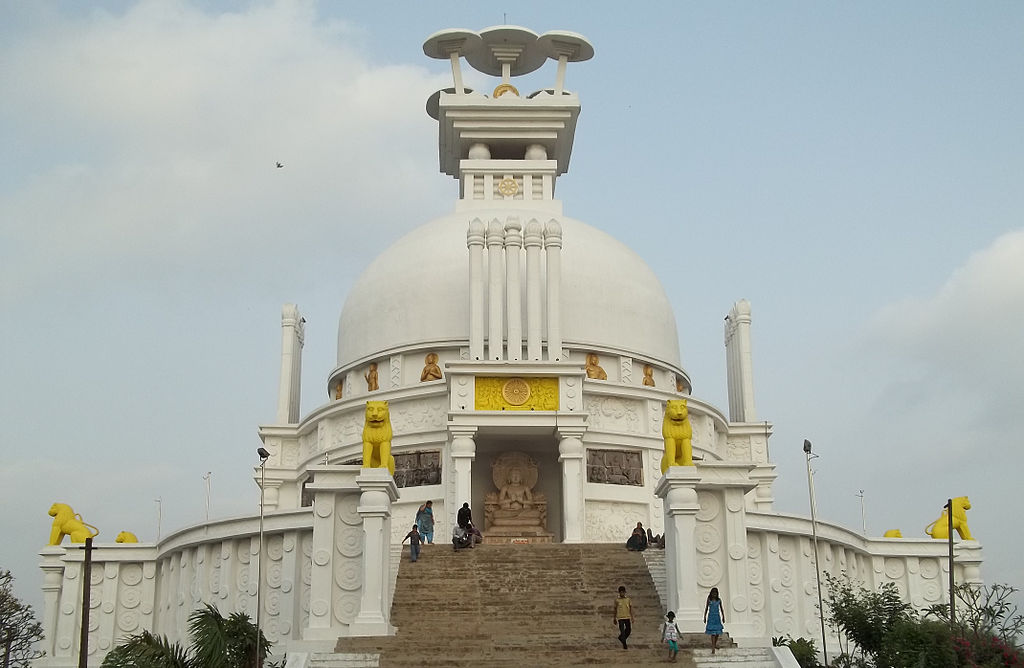
Dhauli is a tiny village 8 kilometers south of Bhubaneswar, situated on the banks of the Daya River, and bears immense significance for Lord Buddha’s devotees. Dhauli is claimed to have seen Ashoka’s character change.
This is said to be the site of the 3rd century B.C. Kalinga War between the Mauryan Empire commanded by Great Ashoka and the Kalinga kingdom. The slaughter was so terrible during the conflict that Daya’s water was supposed to have turned red from the massacre. This caused King Ashoka’s opinions to alter dramatically, and he finally converted to Buddhism. Ashoka edicts, which are essentially rock formations with inscriptions on them, were used to chronicle his reactions to the battle. Dhauli is presently an important Buddhist centre in India, including numerous key Ashoka edicts. Ashoka constructed countless Stupas, Chaityas, and Pillars across the town and did his utmost to promote peace after the conflict by assisting others. Dhauli is home to a stunning Peace Pagoda that draws thousands of visitors each year. Hindus, in addition to Buddhists, go to Dhauli to visit some of the town’s old temples, which are revered worldwide. Other sights in Dhauli include rock cut caverns and the Sadharma vihar monastery, which will make your stay worthwhile.
8. Barabati Fort
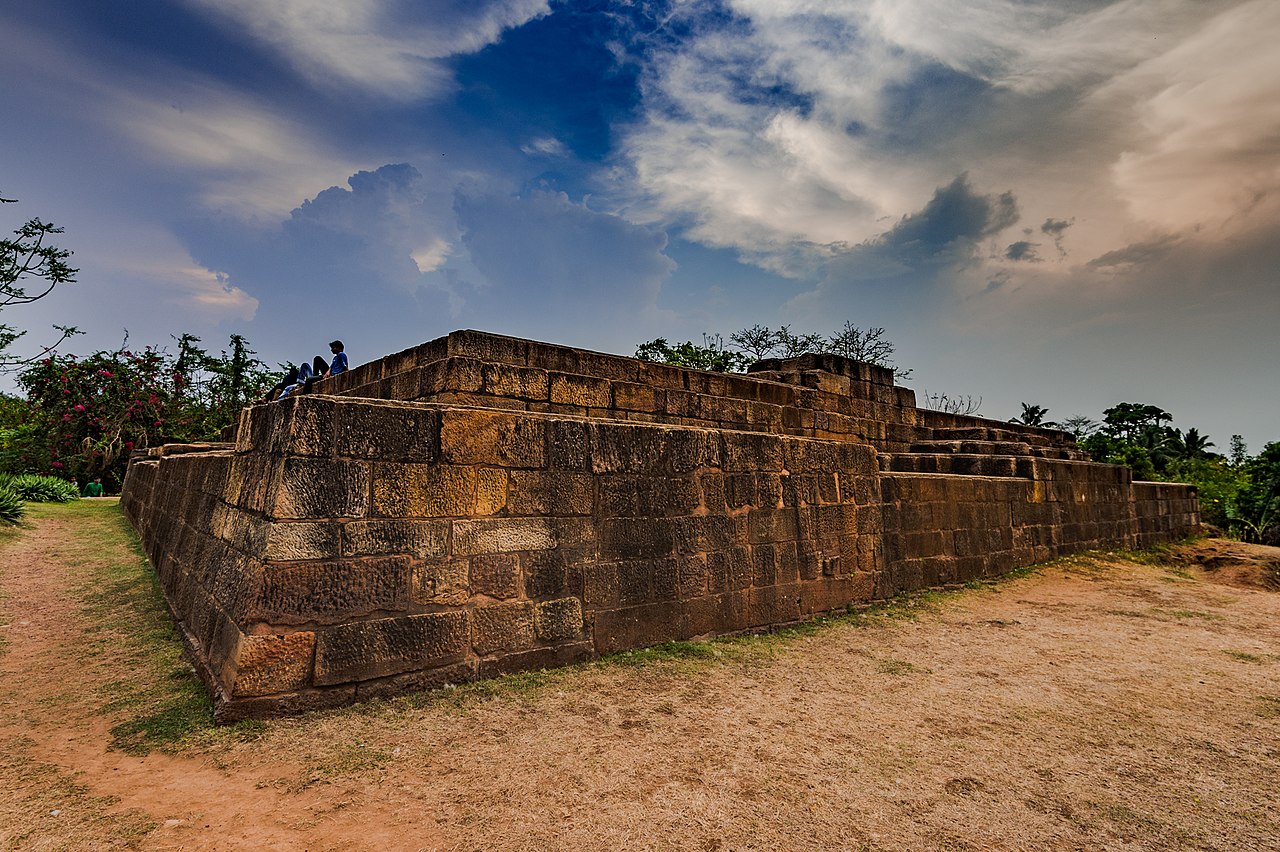
Barabati Fort, located in Cuttack, Odisha, is a well-known fort with carved entryway. It’s around 8 kilometers from the city center. It is a fort erected in the 14th century by the Ganga dynasty. The Mahanadi River runs through the fort. The fort is situated in such a strategic place that it provides a spectacular view over the contemporary Cuttack metropolis. It’s the nine-story palace’s earthen mound. To guard against enemy attacks, the monument was erected with fortifications. A neighboring Barabati stadium is now being built for cultural and sporting activities. A temple has been built in honour Katak Chandi.The fort adds to the city’s splendor while also showcasing its illustrious past.
9. Chausath Yogini Temple
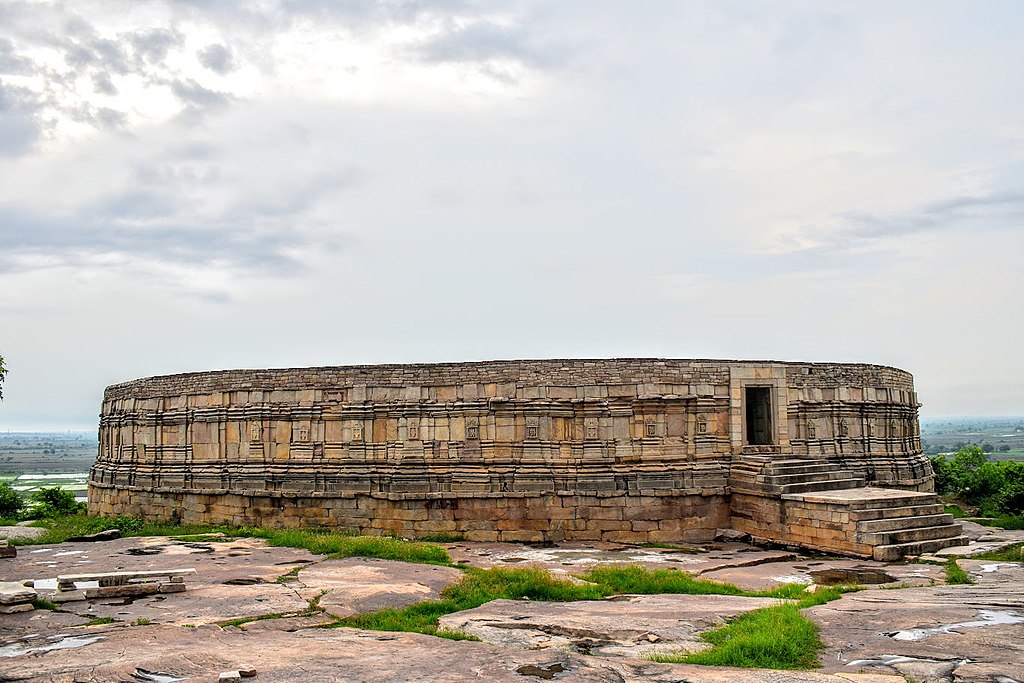
Queen Hiradevi of the Bramha dynasty is thought to have erected the Chausath Yogini Temple in the 9th century. It was created with 56 chambers on the inner portion of its wall that centre on the central altar and was built entirely of sandstone stones. The centre altar, in turn, features eight chambers for Goddess Kali statues. Goddesses occupy 63 of the holes in the contemporary era, with the 64th sculpture reported missing.
The goddess Kali is the temple’s most spectacular sculpture. She is typically shown standing atop a human head, implying that our bodies are continuously triumphing over our bodies. Despite the fact that the Chausath Yogini Temple is an important part of our past, it remains mostly unknown. This is largely due to the fact that it was kept as one of the cult’s most sacred secrets.
Hirapur Chausath Yogini Temple only became well-known in 1953, when distinguished historian Kedarnath Mohapatra patched it back together and restored it to its former splendour as a circular roofless edifice. The temple is around 20 kilometres from the city of Bhubaneshwar. The temple is easily accessible through the Bhubaneshwar-Puri highway and the dirt road going to Hirapur. Traveling through this city, you will undoubtedly come across old tantric traditions and one of the most magnificent architectural styles that is distinct from typical Kalingan architecture. The temple is well worth seeing.
Odisha has a plethora of historical landmarks, especially marvelous temples, that showcase the state’s culture and heritage. A heritage tour of the state will show locations that have played significant roles in Indian history and should not be missed.










